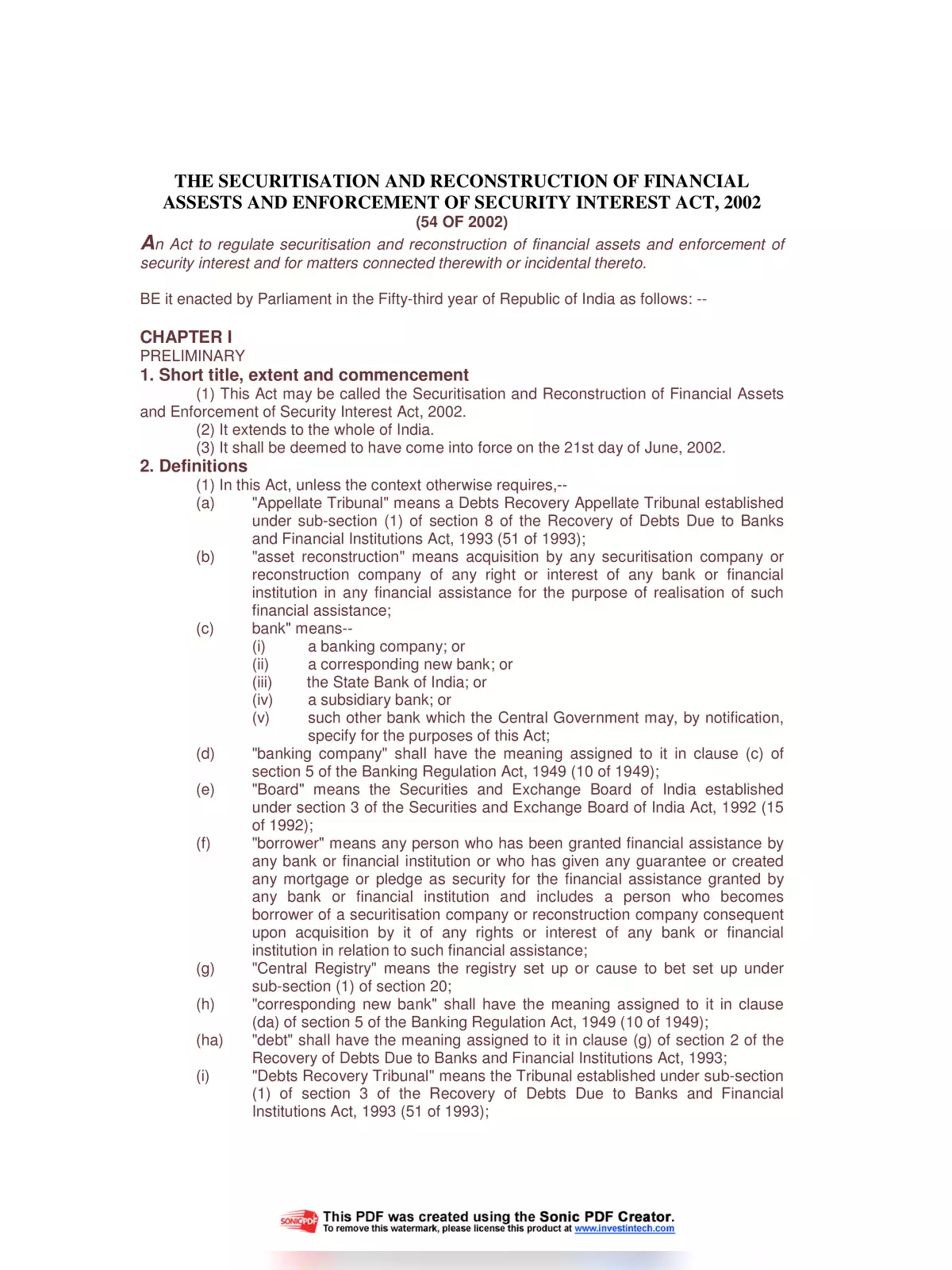Sarfaesi Act 2002 - Summary
Sarfaesi Act 2002: Overview and Importance
The Sarfaesi Act 2002, officially known as the Securitization and Reconstruction of Financial Assets and Enforcement of Security Interest Act, is a key law that helps financial organizations maintain healthy asset quality. This Act is vital for dealing with the problem of Non-Performing Assets (NPAs), also called bad assets, through effective methods and solutions.
Goals of the Sarfaesi Act 2002
The main goal of the Sarfaesi Act 2002 is to ensure a quick and beneficial recovery of non-performing assets (NPAs) for banks and financial institutions (FIs). It allows these organizations to sell off assets, whether they are buildings or other movable properties, when borrowers fail to repay their loans or mortgages.
Additionally, the Act simplifies the recovery process, making the financial system in India more efficient and effective.
Key Features of the 2016 Amendment to the Sarfaesi Act 2002
The amendments introduced to the Sarfaesi Act in 2016 have brought in several important features aimed at strengthening the recovery system:
- Empowered Asset Reconstruction Companies (ARCs) to enhance the functionality of Debt Recovery Tribunals (DRTs).
- Improved operation and effectiveness of DRTs.
- Increased authority given to the Reserve Bank of India (RBI) to monitor and evaluate ARCs.
- The RBI can impose penalties on ARCs for failure to comply with regulations.
- Added hire purchase and finance contracts under the coverage of the Sarfaesi Act 2002.
- The aim of these changes is to speed up the processes conducted by DRTs.
With these updates, the Sarfaesi Act 2002 serves as a crucial instrument for financial institutions to effectively handle and recover their NPAs.
The most recent version of the Sarfaesi Act 2002 is available for download in PDF format, making it easy for all stakeholders to access the latest rules and information. 📄
